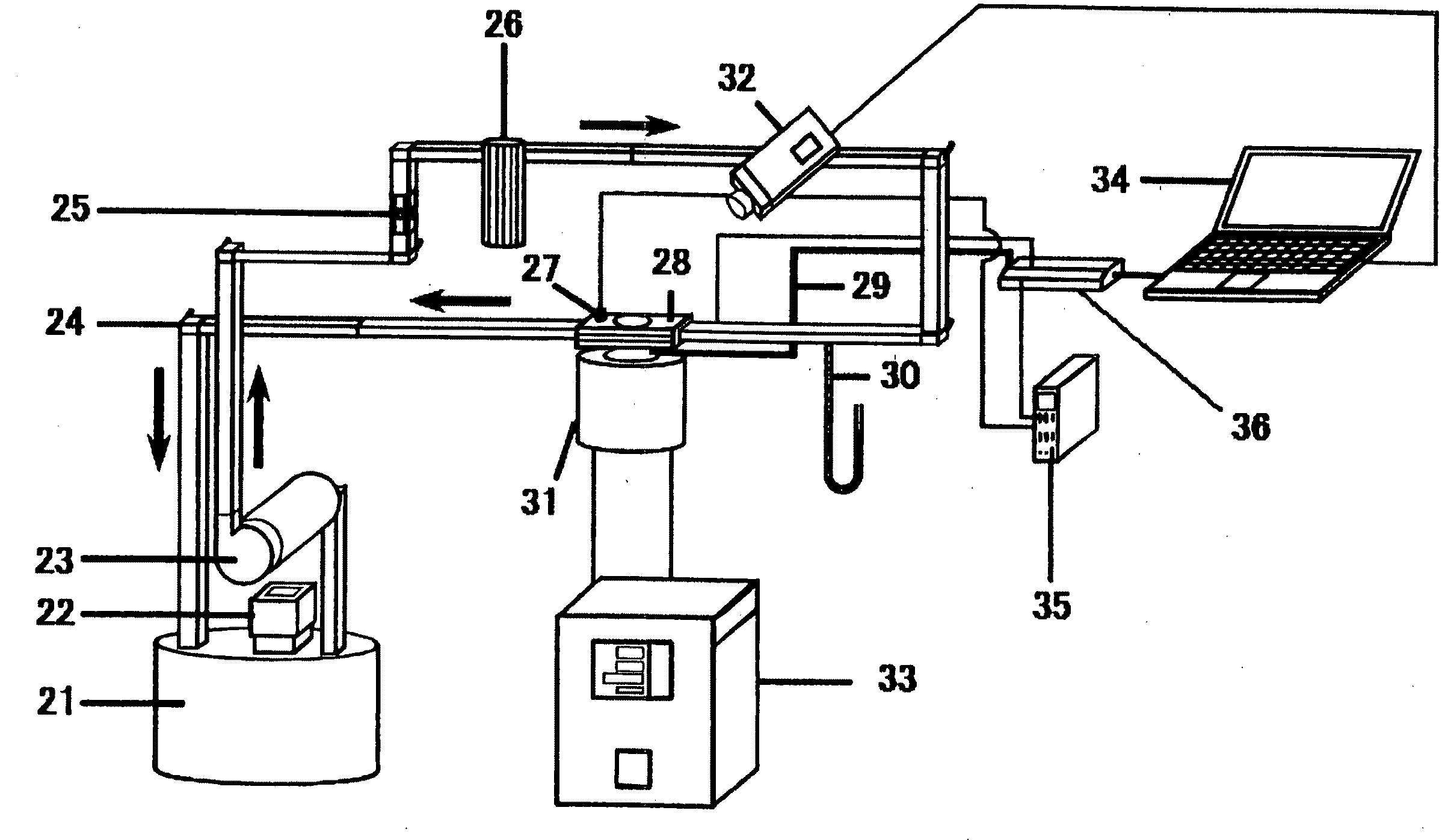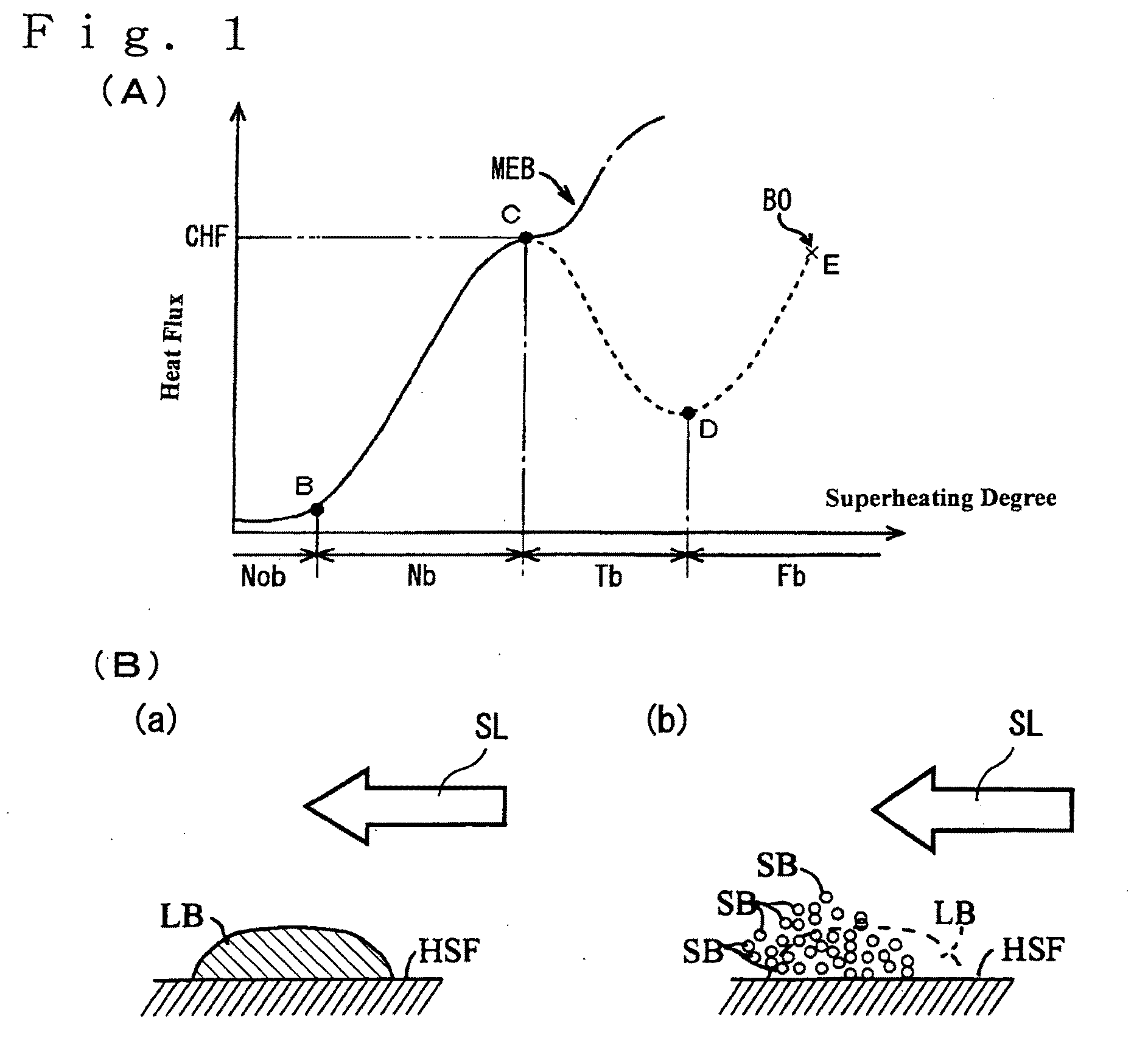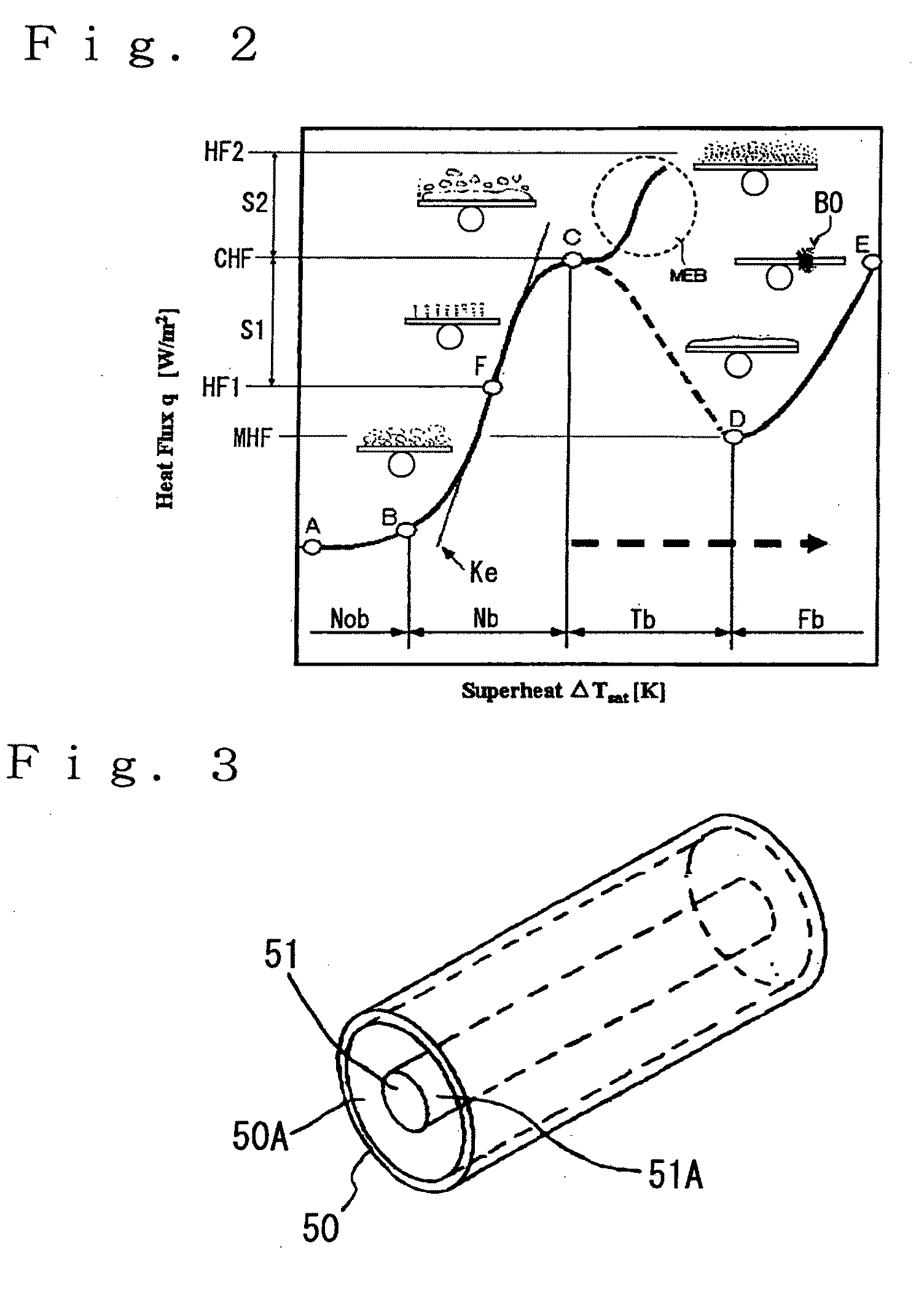Boil Cooling Method, Boil Cooling Apparatus, Flow Channel Structure and Applied Product Thereof
a technology of flow channel structure and boil cooling, which is applied in the direction of heat exchange apparatus safety devices, lighting and heating devices, and semiconductor/solid-state device details, etc., to achieve compact operation and high heat flux cooling
- Summary
- Abstract
- Description
- Claims
- Application Information
AI Technical Summary
Benefits of technology
Problems solved by technology
Method used
Image
Examples
experimental example 1
[0251]FIG. 9 and FIG. 10 are typical cross-sectional views of flow channel structures according to the present invention. The present inventors made a flow channel structure on the basis of these typical views to prove the vibration and noise-inhibiting effect by the group of rigid needles.
[0252]The experiment using this flow channel structure is based on finding a temperature of a heat-transfer surface and a heat removal heat flux from a temperature distribution and a temperature gradient of a thermocouple embedded in a pair of rectangular heat-transfer blocks.
[0253]This flow channel structure will be first described.
[0254]In FIG. 9, character 10 indicates a high heat-generating body that is “an object to be cooled”. The high heat-generating body 10 was made of copper, a peripheral portion of an upper flat surface thereof was cut out, a heat insulating material 11A and heat-resistant silicon 11B were provided at this portion, and the remaining portion was used as a surface 10A to b...
experimental example 2
[0284]An experiment of microbubble emission boiling was conducted under the same conditions as in Experimental Example 1 except that the mean flow rate was changed to 0.3 m / sec, the same 5 flow channel structures as those used in Experimental Example 1 of the flow channel structure having no group of rigid needles and those, in which the number (M) of rows of the group of rigid needles are 1, 3, 5 and 7, were used.
[0285]As a result, it was confirmed that even when the row of rigid needles is increased, the maximum heat flux retains a value within a range of about 350 to 450 W / cm2 and does not vary according to the number of rigid needles.
[0286]On the other hand, the pressure generated by collapse of the coalesced bubble is reduced as the row of rigid needles is increased, and the maximum momentary pressure P is reduced to about 310 kPa (77%) when the group of rigid needles is provided in a row compared with about 400 kPa when no group of rigid needles is provided, and sequentially r...
experimental example 3
[0290]An experiment of microbubble emission boiling was conducted under the same conditions as in Experimental Example 1 except that the cooling liquid was changed to a cooling liquid having a subcooling degree of 20 K, the same 5 flow channel structures as those used in Experimental Example 1 of the flow channel structure having no group of rigid needles and those, in which the number (M) of rows of the group of rigid needles are 1, 3, 5 and 7, were used.
[0291]As a result, it was confirmed that even when the row of rigid needles is increased, the maximum heat flux retains a value within a range of about 300 to 400 W / cm2 and does not vary according to the number of rigid needles.
[0292]On the other hand, with respect to the pressure generated by collapse of the coalesced bubble, the maximum momentary pressure P is reduced to about 190 kPa (50%) when the group of rigid needles is provided in a row compared with about 380 kPa when no group of rigid needles is provided, and reduced to a...
PUM
| Property | Measurement | Unit |
|---|---|---|
| Temperature | aaaaa | aaaaa |
| Length | aaaaa | aaaaa |
| Length | aaaaa | aaaaa |
Abstract
Description
Claims
Application Information
 Login to View More
Login to View More - R&D
- Intellectual Property
- Life Sciences
- Materials
- Tech Scout
- Unparalleled Data Quality
- Higher Quality Content
- 60% Fewer Hallucinations
Browse by: Latest US Patents, China's latest patents, Technical Efficacy Thesaurus, Application Domain, Technology Topic, Popular Technical Reports.
© 2025 PatSnap. All rights reserved.Legal|Privacy policy|Modern Slavery Act Transparency Statement|Sitemap|About US| Contact US: help@patsnap.com



